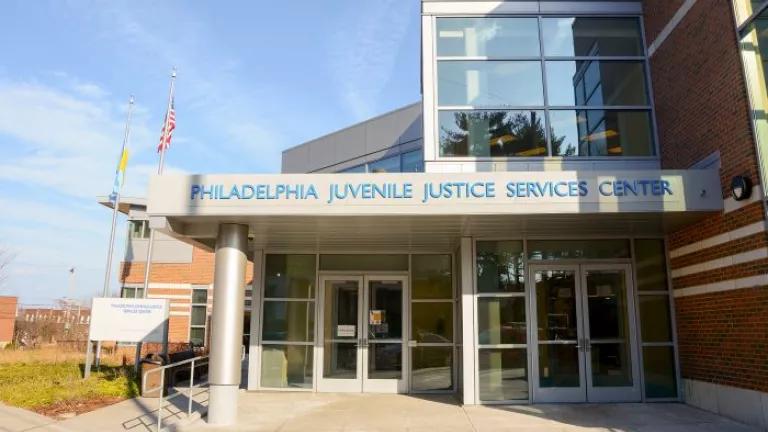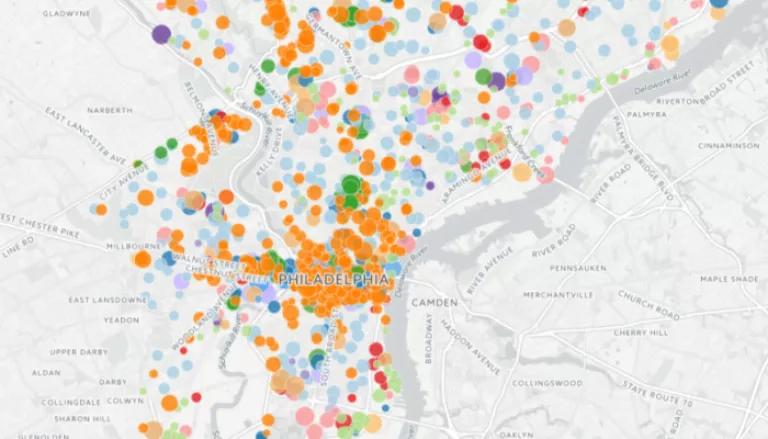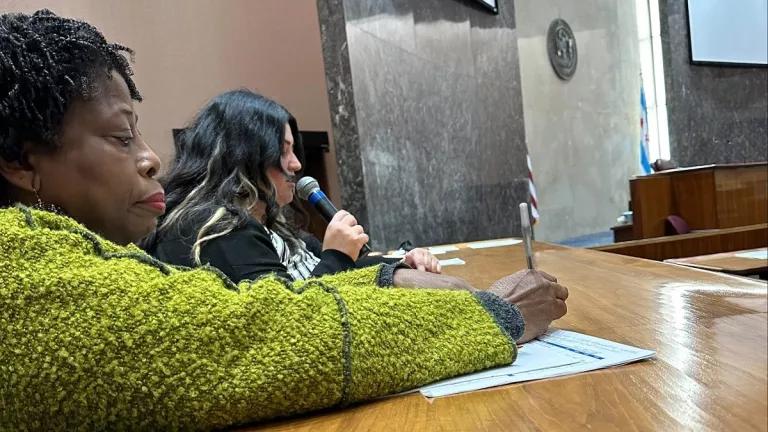Philly City Council Approves Plan to Curb Climate Pollution

When Mayor Jim Kenney committed Philadelphia to meeting the goals of the Paris Climate Agreement, following the Trump Administration’s June 2017 announcement of its intent to withdraw from the global pact, he tasked his administration with developing strategies to tackle the largest source of carbon emissions in the city: building energy use. The city has already made tangible progress: last year, Philadelphia signed a municipal power purchase agreements in the United States, committing to constructing a new Pennsylvania solar farm, which will power 22% of city-owned buildings. What’s more, energy will also be a big focus of the recently launched Climate Collaborative of Greater Philadelphia.
Philadelphia just took another major step toward cutting these emissions through the passage of a landmark Building Energy Performance Policy.
The City Council unanimously passed a building energy performance ordinance, commonly referred to as the “tune-up” ordinance that will require owners of large, non-residential buildings to affirm high performance of their buildings or conduct “tune-ups” of their energy and water systems. The City estimates energy reductions per building will be between 5 and 20%, which is expected to lead to collective carbon emission reductions of more than 180,000 metric tons - the annual equivalent of 21,959 homes’ energy use.
The Building Energy Performance Policy is a key strategy for cutting carbon pollution in Philadelphia and is supported through the Bloomberg American Cities Climate Challenge. Philadelphia is one of 25 cities participating in the Climate Challenge that provides technical and strategic support to reduce emissions in cities nationwide through buildings, energy use, and transportation.
The City foresees significant economic benefits from the new policy, particularly through cost savings and job creation. The tune-ups are expected to result in an aggregate energy savings of more than $50 million every year. Further, the City estimates between 250 and 600 new jobs will be created in the first six years of the program.
Tuning Up to Save Energy
The new ordinance will require owners of non-residential buildings larger than 50,000 square feet to perform building tune-ups or affirm high performance consistent with ENERGY STAR certification, LEED EBOM, or similar standards, at least once every five years.
Buildings undergoing a tune-up must be inspected by a specialist that will identify corrective actions that will improve building efficiency. The building owner must then implement recommendations to comply within minimums set by the City. Required and recommended actions, along with other specific details, will be developed during a rules and regulations process led by Philadelphia’s Office of Sustainability and including building owners and operators, local building experts, and thought leaders from NRDC and other Climate Challenge partners.
The first round of retuning reports, which cover non-residential buildings larger than 200,000 sq. ft., are due to the City by September 30, 2021. Each subsequent year the requirement for the size of reporting buildings decreases, until buildings between 50,000 and 70,000 sq. ft. report in 2024. Subsequent tune-ups or affirmations of high performance will be required once every five years.
Among the large property owners required to comply with the Building Energy Performance Policy is the City itself. In April 2019 the City conducted a tune-up on its Juvenile Justice Center, which provides services to young Philadelphians awaiting cases before the Court system. An initial inspection and corrective actions on the 160,000 square foot facility cost roughly $12,000 and based on modeling, the City expects to annual utility savings of $24,000, a pay-back of just six months.
Building Benchmarking: A Precursor to Tune-ups
The tune-up ordinance is not the City’s first foray into the large building sector. In 2012 Philadelphia City Council passed a benchmarking ordinance that requires about 2,800 buildings in Philadelphia to track their energy and water use over time and report it to the City on an annual basis. This information is published online via a data mapping tool, enabling building owners, tenants, and interested residents to understand how local buildings perform against one another and nationally via the EPA ENERGY STAR score. Between 2013 and 2017, benchmarked buildings showed a 5% reduction in total energy consumption, which translates to thousands of dollars per year in savings. Despite the energy reduction and data benefits of benchmarking, the City knew that it had to go beyond benchmarking to effectively address carbon emissions from buildings, which account for more than 70% of Philadelphia’s carbon footprint.
The tune-up ordinance takes this next step. In addition to data collection and reporting, the ordinance will ensure buildings operate efficiently, cutting energy waste and saving money. Given that the average commercial building wastes 30% of the energy it consumes, there is no shortage of opportunity.




